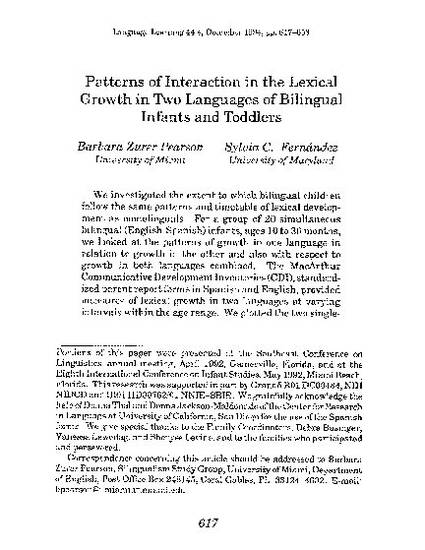
We investigated the extent to which bilingual children follow the same patterns and timetable of lexical development as monolinguals. For a group of 20 simultaneous bilingual (English-Spanish) infants, ages 10 to 30 months, we looked at the patterns of growth in one language in relation to growth in the other and also with respect to growth in both languages combined. The MacArthur Communicative Development Inventories (CDI), standardized parent report forms in Spanish and English, provided measures of lexical growth in two languages at varying intervals within the age range. We plotted the two single-language measures, as well as Total and Total Conceptual language measures, across time, referenced on a second y-axis to the percent of the child's language environment that each language represented. For a subset of the children, we calculated the percentages of general nominals, social words, and verbs for each language to allow the characterization of the children's learning strategies as "referential" or "expressive" (Nelson, 1973). The rate and pace of development were similar to patterns observed in monolinguals. In addition, the vocabulary spurt was seen to occur in about the same percentage of children as has been observed in groups of monolingual children. The bilinguals differed from one another with respect to the relative independence of one language from the other, including the use of different learning strategies in the two languages by the same child.
- lexical development,
- bilingual
Available at: http://works.bepress.com/barbara_pearson/2/
